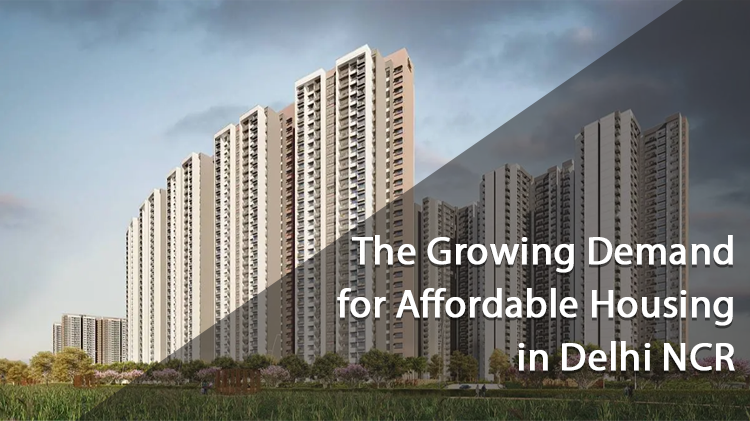
Delhi NCR(National Capital Region) is witnessing a seismic shift in its housing landscape. As the region counties to attract migrants, families seeking better opportunities, and professionals, the need for affordable housing has become a central issue shaping the real estate market. This blog delves deep into the factors driving this demand, the challenges faced, government interventions, and what the future holds for affordable housing in Delhi NCR.
Understanding the Demand: Why Affordable Housing Matters
Urbanization and Migration
Delhi, as India’s capital, has always been a magnet for migrants from across the country. People flock here in search of education, a better quality of life, and education. Between 2001 and 2011, Delhi, Gurugram, Noida, and Greater Noida collectively received the highest influx of migrants in India. Migration accounted for over 23% of Delhi’s population growth during this period, with the city’s decadal growth rate consistently outpacing the national average.
This relentless urbanization has led to a surge in demand for housing, particularly in the affordable segment. As more people move to the city, the pressure on existing housing stock intensifies, making affordability a pressing concern.
Mismatch Between Demand and Supply
Despite a flourishing real estate market, there is a stark mismatch between the demand for affordable homes and their supply. The shortage is not just a Delhi-specific issue but reflects a nationwide trend where urban housing supply lags behind the rapidly growing demand. Estimates suggest that by 2031, India’s urban population will reach 600 million, further exacerbating the housing crisis.
Delhi’s unique urban constraints, such as low Floor Space Index (FSI) and limited land for new developments, have made it difficult to build affordable homes within the city limits. As a result, the demand has spilled over into the suburbs like Gurugram, Noida, and Greater Noida, where land is more readily available for development.
Current Market Dynamics: Trends and Numbers
1. Housing Sales and Supply Surge
The Delhi NCR housing market is currently experiencing a remarkable boom. In the last quarter of 2023, sales surged by 25%, with approximately 33,000 units sold. This growth is attributed to factors such as lower interest rates, robust end-user demand rather than speculative investment, and a flurry of new housing projects.
Developers are responding by ramping up supply. Between July and September 2024, the fresh supply of residential properties in Delhi NCR tripled to over 13,300 units compared to the same period the previous year. Housing sales in the region are projected to rise by 22%, reflecting both increased supply and strong consumer demand.
2. Affordability: A Double-Edged Sword
While the luxury segment to growing, affordability remains a crucial factor for a large segment of homebuyers. The anticipated interest rate cuts in 2025 are expected to enhance affordability and stimulate demand across market segments. However, despite these positive trends, Dlehoi NCR and Bengaluru are exceptions where affordability has declined year-on-year since 2022 due to price hikes and stagnant incomes.
The growth in property prices in Delhi NCR has not kept pace with income growth, making it harder for many to afford homes. Even with projected interest rate cuts, the price points at which the new supply is coming may not be significantly affected, especially in prime locations.
Challenges Hindering Affordable Housing
|
1. Lasn Availability and Urban Constraints |
Delhi’s low FSI and limited land availability within city limits restrict the scope for vertical development. Most new affordable housing projects are being developed in the suburbs, which, while easing the supply crunch, also shifts the urban sprawl further outward. |
|
2. Reluctance of Private Developers |
Developers often shy away from affordable housing due to thinner profit margins compared to luxury or premium segments. Rising construction costs and regulatory hurdles further discourage investment in this segment. |
|
3. Price vs. Income Mismatch |
The rapid rise in property prices, especially in aspirational markets like Noida and Gurugram, has not been matched by corresponding income growth. This has eroded affordability for many potential buyers, particularly first-time homeowners. |
Conclusion
The growing demand for affordable housing in Delhi NCR is both a challenge and an opportunity. The region’s dynamic real estate market, fueled by migration, infrastructure development, and urbanization, is at a crossroads. Addressing the affordability crisis requires a multi-pronged approach.





3 Comments